
Best Lancang Hotels
Enter your dates for prices and availability of the best hotels in Lancang.
Swipe up to view more
Filter by:
Hotel Star Rating
≤2345
Popular Filters
Amazing 4.5+Great 4.0+Good 3.5+Pleasant 3.0+261 Best Hotels to Stay in Lancang
Select your travel dates for best hotels in Lancang, featured by Trip.com based on guests reviews!
Most Booked
Lowest Price
Closest to Downtown
Highest Rated

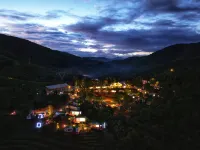

Hotel near Lancang
AAnonymous User 2024.02.08
Very good experience hotel
Before arriving, Xiaoyu called to inform the route, the hotel activities, and helped arrange accommodation as soon as he arrived at the store, accompanied by tea making activities. The attitude is very good, comparable to a five-star housekeeper. The supervisor Xiaoyu is a beautiful girl, who greets me warmly from afar, and greets hot tea and coffee meticulously. And you must taste the tea made on National Day, which is great! How to describe it? Feel at home? Simple and unpretentious? In short, this must be my next must-choice hotel in Lancang.
Outstanding
102 reviews
4.7/5
Price from
PHP 5,445
per night


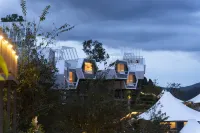
Hotel near Lancang
ZZhuzihui 2025.02.04
Despite the thrilling winding mountain road, the hotel is still quite distinctive. You can see the hotel's honeycomb exterior in Lao Dabao Village, which looks like an alien flying object halfway up the mountain.
The room has a strong sense of design and advanced facilities, but I booked the wrong room type. You need to climb stairs from the living room to the bedroom to the viewing platform in the honeycomb room, which is not suitable for the elderly.
The bar and cafe have a great view. The villagers' performance that night was not scheduled, and a sightseeing bus took everyone to Lao Dabao Village the next day to watch the village evening.
Outstanding
167 reviews
4.8/5
Price from
PHP 8,752
per night
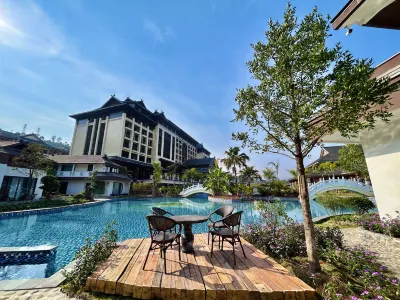


Hotel near Lancang
GGuest User 2025.03.14
Hotel location is very good, room facilities are very good, the room is very clean and tidy, the mattress is very soft and comfortable, I even carry the disposable bed is useless  service is very good, parking is convenient and free, eating and shopping are very convenient, room space is large, lighting is good, The first time I stayed, I saw many people on the Internet saying that the service was warm. It was a worthwhile trip. The front desk lady and the little brother were very good, very warm, responsive, the phone was connected in 1 second, and I was patient to listen to my demands. I must like 👍🏻 I will come next time, it is recommended!
Very Good
40 reviews
4.1/5
Price from
PHP 1,747
per night

You Might Like
Lancang Hotels With BreakfastLancang Hotels With Twin RoomLancang Hotels With 1 Double BedLancang Hotels With Swimming PoolLancang Hotels With Free Cancellation

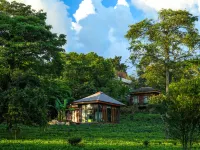
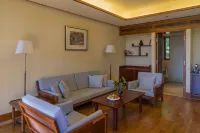
Hotel near Lancang
YYuanxiaoying 2023.12.05
How to evaluate this hotel? For me, a hotel lover, this should be a must-check-in hotel. Although it is a bit old, it has been well maintained, the environment is not too much, and the supplies, bathroom supplies, and configurations in the hotel are not picky. However, the breakfast is basically nothing. This is not important. The important thing is that if there is nothing, there should be no sense of ceremony. Since no one is staying, this kind of set breakfast delivered to the room will not look low. And the service is really bad, the service staff have no sense of service at all. I bought some clothes and when I sent them back for the first time, they were wrong. The second time, the clothes were delivered correctly, but they were put in the laundry bag like dirty clothes. They probably hadn't been ironed or folded, and they were just in a ball, as if they hadn't been washed. My cashmere pants also shrunk in the wash, I guess I didn't even check the washing label. When checking into a hotel, there are only three people at the front desk. They are responsible for checking in, driving a battery car to transport guests, and picking up luggage. In such a large hotel, the service staff are almost invisible. Also, calling for help to change into a new bath towel proves that I still need to take a shower. As a result, even the floor towel was removed when I came back. At a price of nearly 4,000, this kind of service is simply speechless. I would also like to suggest that the hotel replace the plastic slippers. The quality and color will be improved immediately.
Outstanding
52 reviews
4.7/5
Price from
PHP 25,772
per night
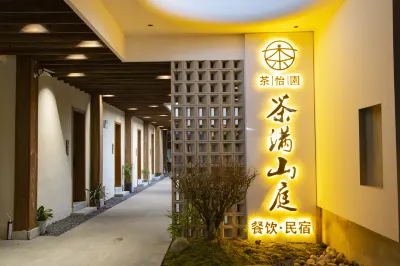

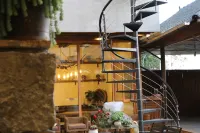
Hotel near Lancang
JJinjidebeila 2025.02.08
Exceeding the expected accommodation, will definitely go back to live, the king of cost-effectiveness, this price and environment, what bicycles are needed.
Facilities: Except that the toilet lid is not smart, everything else is very good. The bed and pillows sleep well. It is really a surprise for people like me who recognize the bed.
Hygienic: The room is very clean.
Environment: Surrounded by tea gardens, the air is good, and the various flowers and plants in the yard are very warm.
Service: The boss and the proprietress are really good. I also gave me a sea bowl with a lot of meat dumplings (only 10 I eat to the top) and made black tea and prepared fruit. I flew directly to me. The cooking in the kitchen is delicious, and the liver and waist are fried. The thief is tender and delicious! The portion is enough and cheap. Next time I come, I'll order fried waist flower, because I didn't eat enough this time.
Outstanding
63 reviews
4.6/5
Price from
PHP 1,747
per night


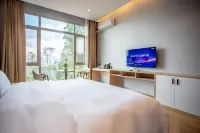
Hotel near Lancang
GGuest User 2024.03.18
This B&B just opened in February 2024 and is very clean. The landlady doesn't trust asking an aunt to clean, so she does everything herself, which shows that the landlady is very demanding. The landlady is very nice, warm and thoughtful, and you really feel at home. The breakfast is also great, the dried rice is delicious and the fruit is fresh. The free-range eggs and sweet potatoes are both hot. There are tall trees outside the window, and the view is great! Now I'm lying in bed and commenting sincerely, so I won't take pictures, haha
Outstanding
67 reviews
4.8/5
Price from
PHP 2,543
per night



Hotel near Lancang
YYouhuzidenanren! 2025.02.04
Facilities: quite good, hardware is relatively new.
Hygienic: clean and tidy, cleaned in place.
Environment: Parking is convenient and quiet.
Service: It can definitely be regarded as a local five-star level. And the exquisite hotel that can control your three meals, the quality of the meal is absolutely high-quality and fresh, and the milk is fresh milk. In addition to the free mineral water in the room, there are free mineral water on every floor. It is a well-known brand. There is no reduction in quality because of the free provision. There are free snacks and drinks next to the front desk. The proprietress is very warm and the service is very intimate. Thanks to the proprietress for Ethiopian coffee. It will definitely be the preferred hotel in the future.
Outstanding
394 reviews
4.8/5
Price from
PHP 1,693
per night



Hotel near Lancang
XXuThéo 2025.02.09
The hardware facilities are excellent, and they are very good in any city. I really love the Zen bed on the terrace of the room. It is a great experience to stare at the stars at night. Fruits, tea and water are welcome in the room as standard, and drinks in the mini bar can be given as gifts. It is really full of sincerity~
The surrounding environment is even better. It is at the foot of Jingmai Mountain, full of green and abundant oxygen. People can nourish their eyes and lungs in it😁
The service is especially praised~ The afternoon tea is beautiful and delicious (see the picture), and the price is not high. The breakfast is of high quality and there are many kinds of meals. Even if it is almost closing time, the meals are still being updated.
It should be emphasized that every waiter we met in the hotel is very warm and proactive in providing services, especially the front desk receptionist Xiaona, who is patient and kind, and is humble and warm to the opinions of the guests.
In general, the two nights at the Six Times Hotel are one of the best travel experiences in recent years~ Highly recommended!
Perfect
105 reviews
4.9/5
Price from
PHP 10,772
per night

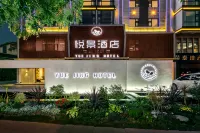

Hotel near Lancang
GGuest User 2024.10.26
酒店位置不錯,環境很好,服務態度特別好,昨天晚上喝多了,不小心吐了地上,我早上跟前台説很抱歉,可以承擔打掃費用,後來保潔阿姨也不怕臟去清理了,也沒收我費用,很感謝,希望酒店越來越好,生意興隆,財源滾滾
Outstanding
315 reviews
4.7/5
Price from
PHP 1,817
per night

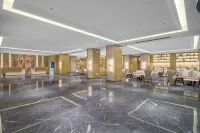

Hotel near Lancang
GGuest User 2025.02.11
From Pu'er to Lancang, I was amazed when I stayed at this hotel.
The front desk clerk has a good attitude and a clear logic.
It has a large parking lot. Parking is very convenient.
The decoration design of the room is very good. Complete value!
The breakfast is particularly rich. Chinese and Western food is very rich. After eating, I feel that I can go to Jingmai Mountain for a big day.
I hope the hotel's configuration of the TV set-top box can be improved.
Outstanding
61 reviews
4.7/5
Price from
PHP 2,051
per night
What Travelers Said About the Best Hotels in Lancang
See all
Browse these genuine traveler ratings and real guest reviews to find the best Lancang hotels.
4.8/5
Outstanding
GGuest UserLocation and convenience: Describe the location of the hotel and whether it is convenient to reach the main attractions, business districts or transportation. Facilities and services: evaluate the facilities offered by the hotel, such as gym, swimming pool, business center, etc., as well as the quality of customer service, including the efficiency and friendliness of the front desk staff. Room comfort: discuss the cleanliness of the room, the size of the space, the comfort of the bed, and any special amenities (such as flat-screen TV, minibar, etc.)
4.7/5
Outstanding
GGuest UserThanks to the boss and his wife for their warm hospitality! Absolutely underestimated inn, one of the best locations in Jingmai Mountain to see the sea of clouds. Parking in the courtyard is convenient, unlike the village of Tenggan and Wengji cars. The room is large and the facilities are good. The boss and his wife are very real, the breakfast rice noodles are delicious, and the tea is delicious. Personal experience, the most amazing landscape of Jingmai Mountain is the sea of clouds. On the contrary, the ancient village feels ordinary when you see more, and the cherry blossoms on the road are not bad. Living in Sakamoto to see the sea of clouds is a good choice. It is really beautiful to go to the ancient village to check in during the day. The sea of clouds is really beautiful. It is worth visiting once. I get up for two consecutive days to watch the sunrise of the sea of clouds. It is as beautiful as a fairyland. It is absolutely shocking.
4.7/5
Outstanding
GGuest UserThe room was clean and hygienic, very good value for money, the service provided was particularly good and very warm. The boss will go to the bus station to pick up and drop off, every morning at 7:00 will uniformly take guests to see the sunrise cloud sea, the viewing position is unique, unobstructed, the sea of clouds is at your feet, the swing is absolutely perfect, the boss will also help take pictures and videos, shot several times, very patient. The breakfast at the bed and breakfast is also delicious, with a rich variety of rice noodles, oil fields, eggs, buns, soy milk and so on. We were very lucky to catch the last free charcoal barbecue of the year, I have to say it was the best taste of barbecue I have ever eaten, also provided beer, we chatted tea and barbecue together, the atmosphere is very relaxed and relaxing, quickly brought everyone closer, a very humane B&B, the owner and his wife really made people feel the simplicity of Jingmai, very carefully run this B&B. Stayed for two days, very comfortable, highly recommended, deeply felt the fireworks of Jingmai, reaped a lot of kindness from strangers, next time I come to Jingmai will continue to choose to stay here, looking forward to the boss's new B&B opening!
4.7/5
Outstanding
FFeiyangdeyanyanIn Lancang County, there are such scale hotels, which may be one of the best. The hotel lobby is atmospheric, the rooms are clean and all kinds of equipment are convenient to use. The hotel met my proposal to arrange a quiet room. The waiter was enthusiastic and was on call. My room corridor light is bad? Find a way to solve it in time to ensure that guests rest. The hotel's breakfast is rich in variety and tastes good. In short, Lancang Hualong Hotel left a good impression.
4.6/5
Outstanding
XXiaowangzia-17The only inn in the ancient village of Ligan (seems to be), parking is convenient. There is a parking space in the scenic spot (at the entrance of the village). You can contact the boss to pick up your luggage. People with less luggage walk in quickly. The accommodation conditions are clean as a whole, the whole village is the original village without modification, the locals cook rice and smoke, the room is wooden, the sound is not good, you can take a bath with hot water, although small but complete. The boss is very enthusiastic and there is also a restaurant to eat. At night, just in time for the village celebrations, Zhaixin roasting fire dancing ~ The original ecology is a good place, much better than Wengji, there is no commercialization here, and it is protected.
4.6/5
Outstanding
GGuest UserThe hotel is in Mangjing Shangzhai, very close to the Queen Bee Tree. I stayed for two nights and woke up every morning listening to the birds singing. The air was very fresh when I opened the balcony door. I really liked this big balcony. There was roasted tea and Brown singing in the evening. It was good to organize activities to visit the ancient village during the day. However, the level of the hotel's guides really needs to be improved. It may be related to the cultural level and knowledge. The service is very good.
4.5/5
Excellent
GGinaScenery is just like the photo, you can have full view of the clouds in the mountain every morning.
Reception is hospitable and allow us to use cash even though most ppl uses Wei Xin to pay here.
Cleanliness can be looked into as the towels have some stains if u look closely. Room is slightly old and needs some maintenance.
Other than that, I think this is one of the better lodging in this area as of now.
4.5/5
Excellent
GGuest UserParking is very convenient, and the dishes cooked by the boss are also delicious. However, the light from the corridor will come through the toilet window, which will be a bit dazzling at night. It is very clean and the location is good. I suggest you lick a latex pillow if you can in the future. These two days My neck is a little sore from sleeping. In the morning, the boss also took him to climb the ancient tea forest of Aileng Mountain and introduced it all the way, so that tourists here could learn more about Jingmai Mountain and the stories of local residents.
4.4/5
Excellent
GGuest UserTwo nights stay.
The next day, I arrived at the room door but couldn't get in after swiping the room card, so I went back to the front desk. The lady at the front desk kept saying, ”You're staying for two nights.” 😭
At 12:20-40 am on the second night, someone was crying and singing in the corridor. I couldn’t understand a word of it. It was very creepy…
I called the front desk to inform them of the situation, went upstairs to drive them away, and they came back crying 2 minutes later. It was so frustrating!
Is it possible that the hotel has no surveillance in public areas? 😰😰😰
4.1/5
Very Good
VVeraFor a visit to Jingmai mountain this hotel is perfectly situated. The tourist office is right across and from here you can take a bus to Jingmai. Nearby are good restaurants and breakfast noodle places, as well as basic shops with fruit and vegetables. The best thing about the hotel is the incredibly friendly and helpful management, who will assure you have the best experience! Thank you for your kindness and care :)
FAQs About Lancang Hotels
Where is the best place for a stay in Lancang?
Lancang has some of the best hotels for you to select. Whether you're traveling for business or on a vacation, , Eterna Venue Resort Jingmai and Diwanara Homestay are preferred hotels.
What is the average hotel fee in Lancang?
For hotels in Lancang, the average price on weekdays is PHP 2,837, the average price on weekends (Friday–Saturday) is PHP 2,851.
What's the best high-end place to stay in Lancang?
Lancang has many luxury hotels of different styles. Eterna Venue Resort Jingmai, VipaXana·Abaila and Bolian Resort & Spa Jingmai are very popular.
Which hotels in Lancang has the best breakfast?
Eterna Venue Resort Jingmai,VipaXana·Abaila and Lancang Jingmai Mansion Hotel provide high-quality breakfast. Start your day with fresh, delicious breakfast!
What's the best place to stay for family vacations in Lancang?
Eterna Venue Resort Jingmai, Diwanara Homestay and Lancang Tea Youxiaoju Inn are also nice for family travel. Enjoy a trip together with your kids and other beloved family members!
What are the best hotels with gym and fitness center in Lancang?
, Eterna Venue Resort Jingmai and Diwanara Homestay provide fitness facilities. Boost your fitness during your travel time!
What's the best pet-friendly accommodation in Lancang?
Lancang Lidu Hotel, Jingmaishan Shishi Homestay and Lancang Jinhua Boutique Theme Hotel allow pets. Take your pets with you during your stay!
What are some hotels with pools in Lancang?
Lalong Yunqi Xiaozhu Inn, Hualong Hotel and Bolian Resort & Spa Jingmai are hotels with swimming pools. Stay at any of these hotels to enjoy a swimming pool!
Which hotels in Lancang provide free Wi-Fi?
Whether you're traveling on business or for vacation, internet connection is essential. Lancang Tea Youxiaoju Inn, Lancang Lidu Hotel and Daddy and Mummy's Inn are popular hotels with free Wi-Fi.
What’s the best hotel in Lancang with hot springs?
Wanna experience hot springs in your hotel? Hualong Hotel has hot springs. Book now!
Which hotels in Lancang provide airport transfers?
Worried about getting lost in Lancang? , Eterna Venue Resort Jingmai and Diwanara Homestay provide airport transfer services.
What is the best spa hotel in Lancang?
Getting tired after a long walk? , Eterna Venue Resort Jingmai and Diwanara Homestay provide highly rated spa services.
Where to find hotel deals in Lancang?
Trip.com provides various promotions and discounts for users all year round. You can check the promotions page to see what promotions are available on Trip.com.
Lancang Hotels Info
| Highest Price | PHP 13,261 |
|---|---|
| Lowest Price | PHP 437 |
| Number of Reviews | 16,308 |
| Total Properties | 334 |
| Average Price (Weekdays) | PHP 2,837 |
| Average Price (Weekends) | PHP 2,851 |
Keep Exploring Lancang
Popular Cities
Hotels in San Agustin TlaxcoHotels in RimeteaHotels in OcopulcoHotels in ManahHotels in HalbanHotels in San Buenaventura AtempanHotels in Bacame NuevoHotels in BrailaHotels in PriboiestiHotels in GambinoHotels in TambopataHotels in El Terrero SurHotels in DchairaHotels in San Sebastian del SalitreHotels in Jalpa de los Banos